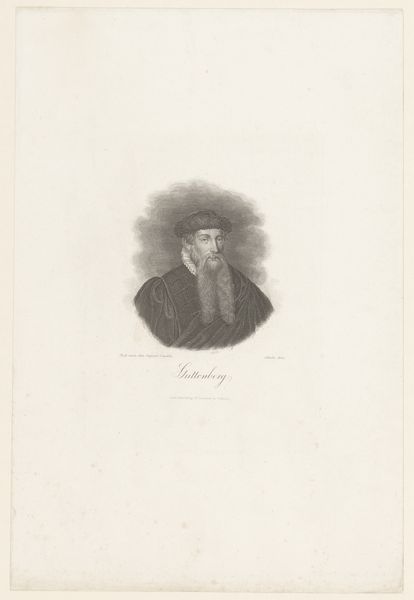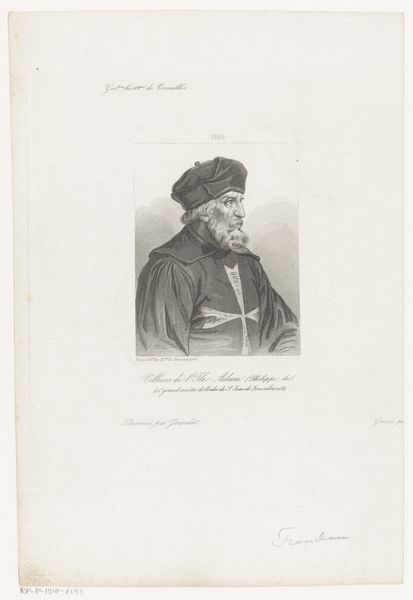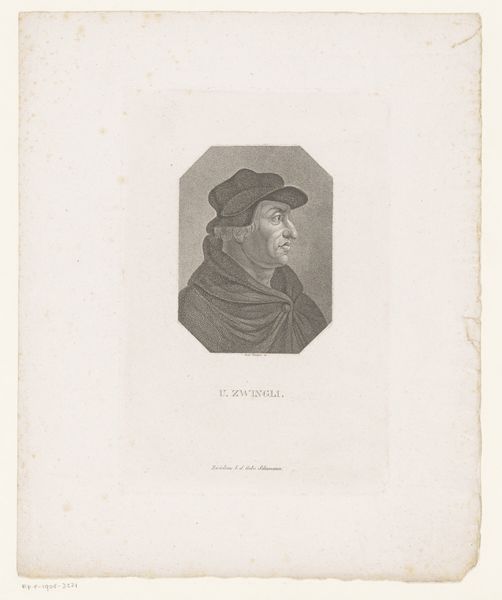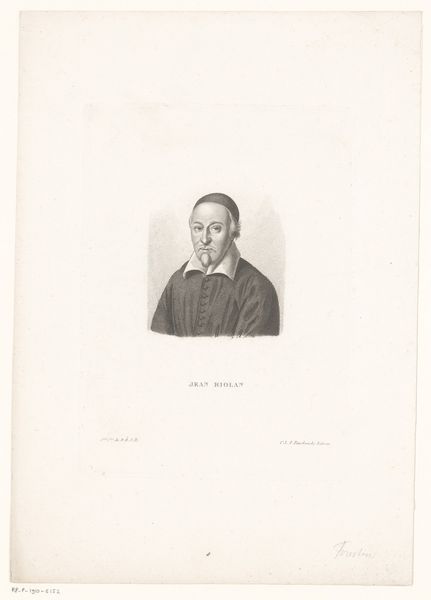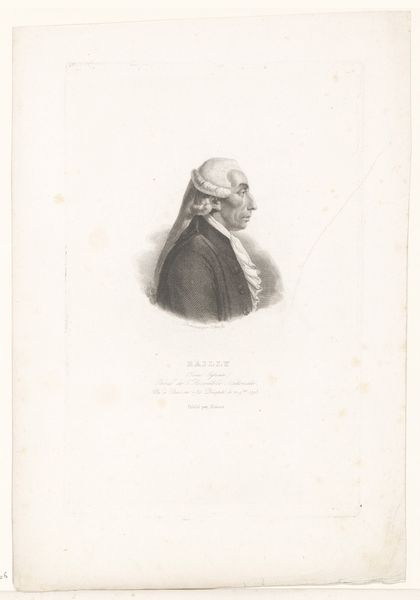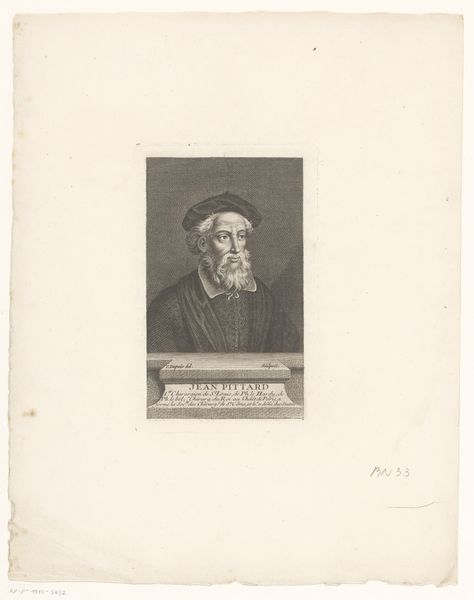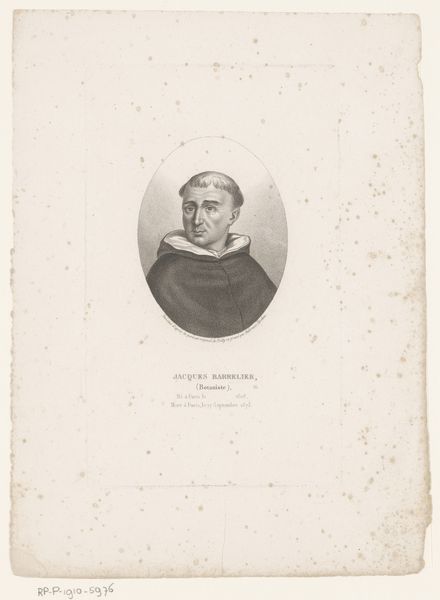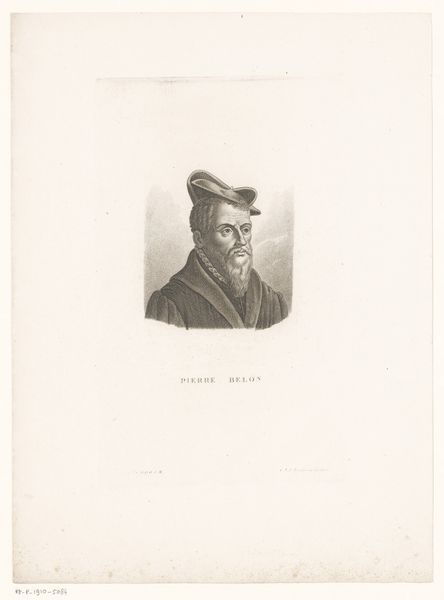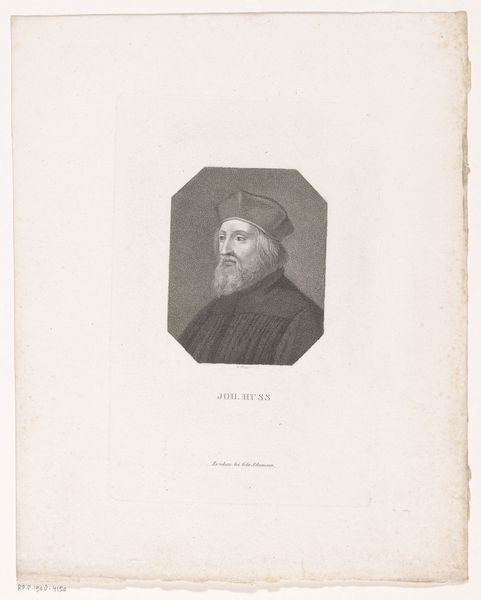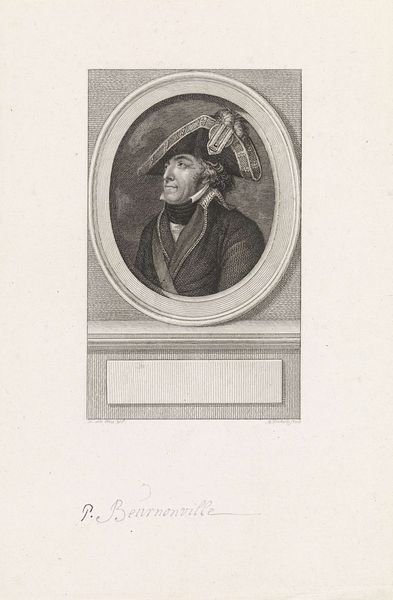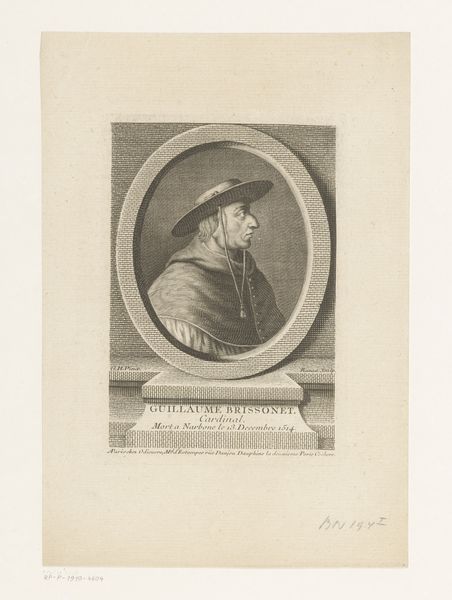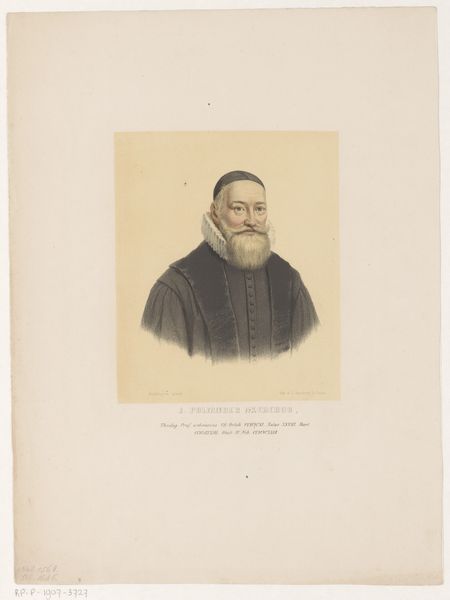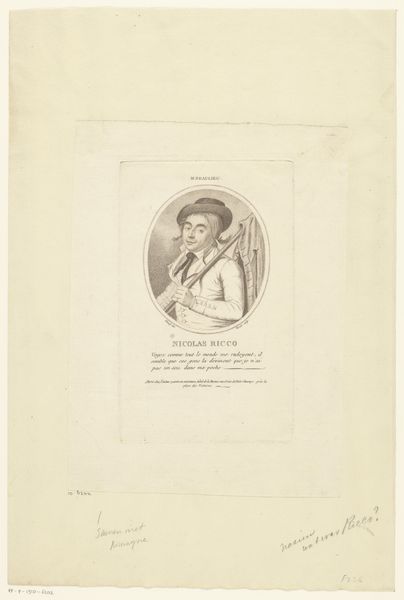
drawing, print, paper, graphite
#
drawing
# print
#
paper
#
graphite
#
watercolor
#
realism
Dimensions: height 245 mm, width 180 mm
Copyright: Rijks Museum: Open Domain
Editor: Here we have Ludwig Emil Grimm’s portrait of Ernst August Rumann, possibly from 1827. It's a drawing or print on paper, likely using graphite and maybe watercolor. He looks very serious. What's your interpretation of this piece? Curator: Beyond the immediate impression of seriousness, consider the societal position Rumann likely held, judging by his clothing. The fur trim, the cap – these speak to status, power, perhaps even a deliberate construction of masculinity within the Biedermeier period. What might a portrait like this communicate about societal expectations and class structures? Editor: I see your point. It’s not just a portrait; it's making a statement about his place in society. The realism emphasizes his individual features but the trappings signal his class. Do you think there's any way to see how his identity may differ based on other characteristics? Curator: Absolutely. Consider, for instance, how artistic representations in portraiture contribute to a legacy—who gets remembered, and how. Also think of what this artwork lacks— where are the images of working class men and women in similar public venues? Portraits like these reinforced existing power structures. What would a feminist critique of this portrait reveal, perhaps by focusing on who is missing from these narratives? Editor: That's really insightful. I hadn't considered the perspective of absence—whose stories are not being told in contrast. Curator: Exactly. It’s not just about appreciating the artistic skill but understanding the narratives that are being amplified and the systemic silencing of other voices. A study of art history involves recognizing art’s inherent role in perpetuating power dynamics, wouldn't you agree? Editor: I do agree. I'll definitely look at portraiture differently from now on, thinking about who’s in the frame and who’s left out. Curator: Hopefully that will open to new possibilities, when looking at the images that are presented to you.
Comments
No comments
Be the first to comment and join the conversation on the ultimate creative platform.
